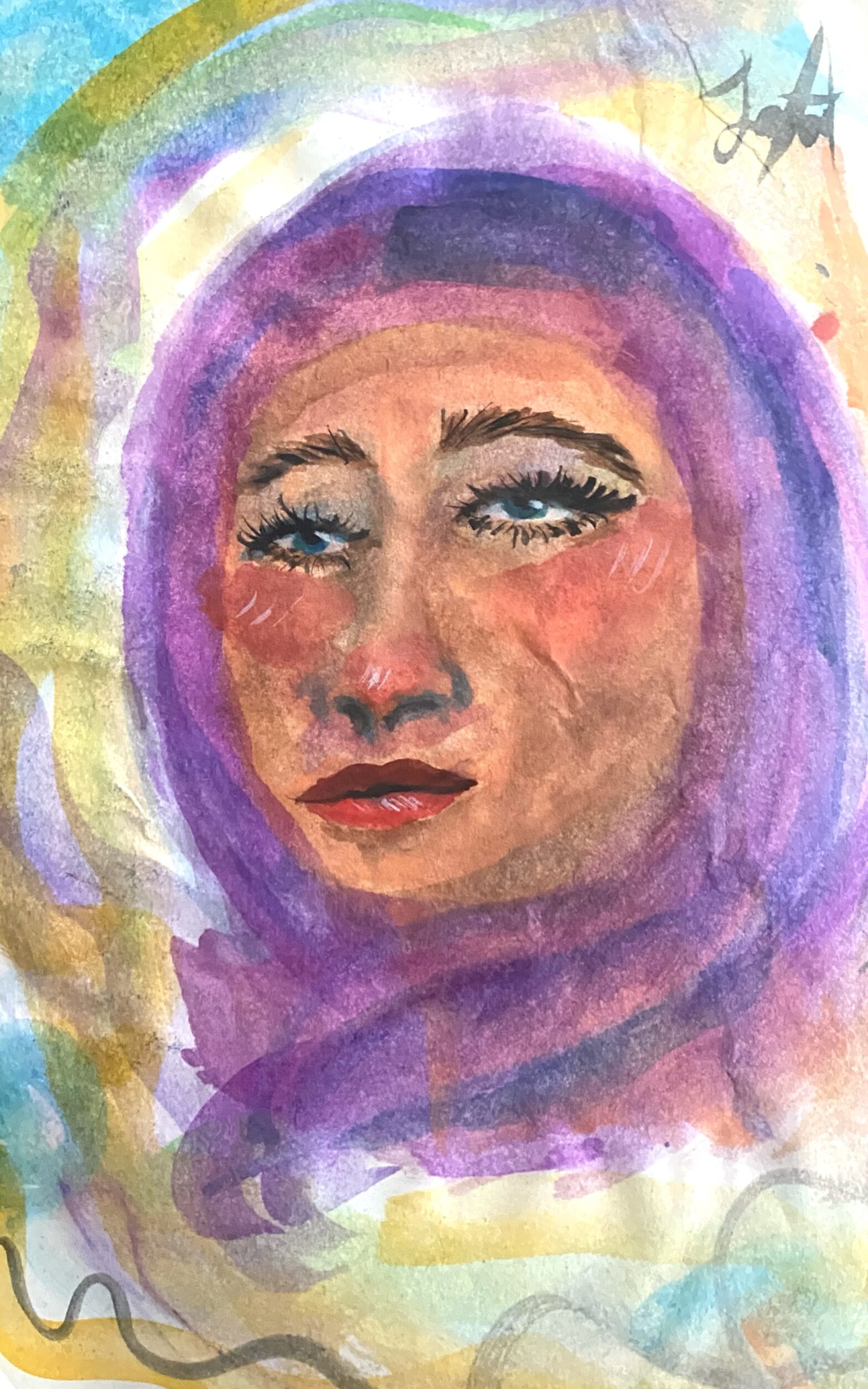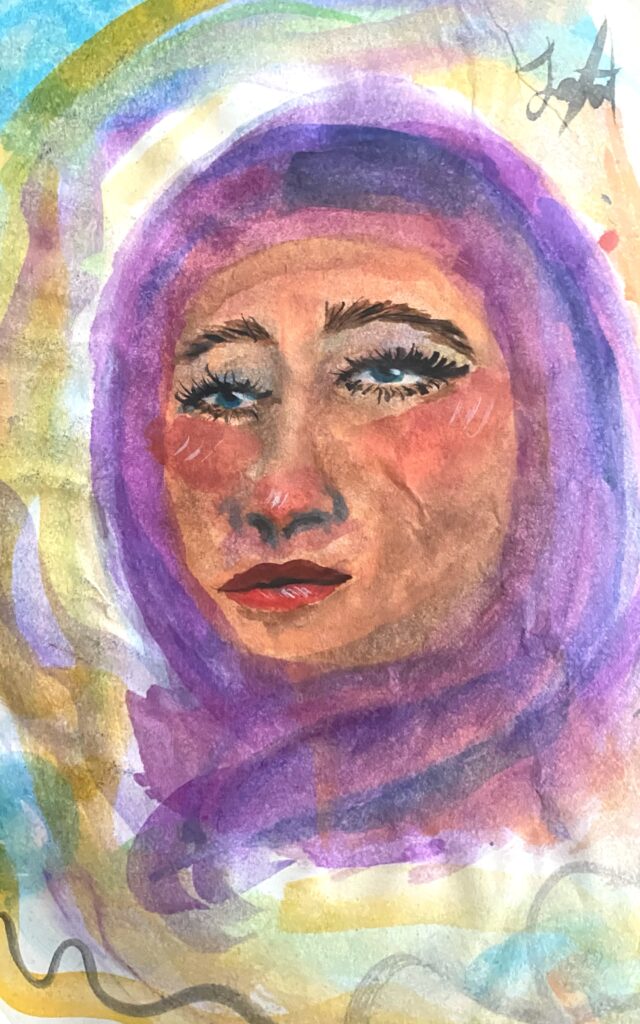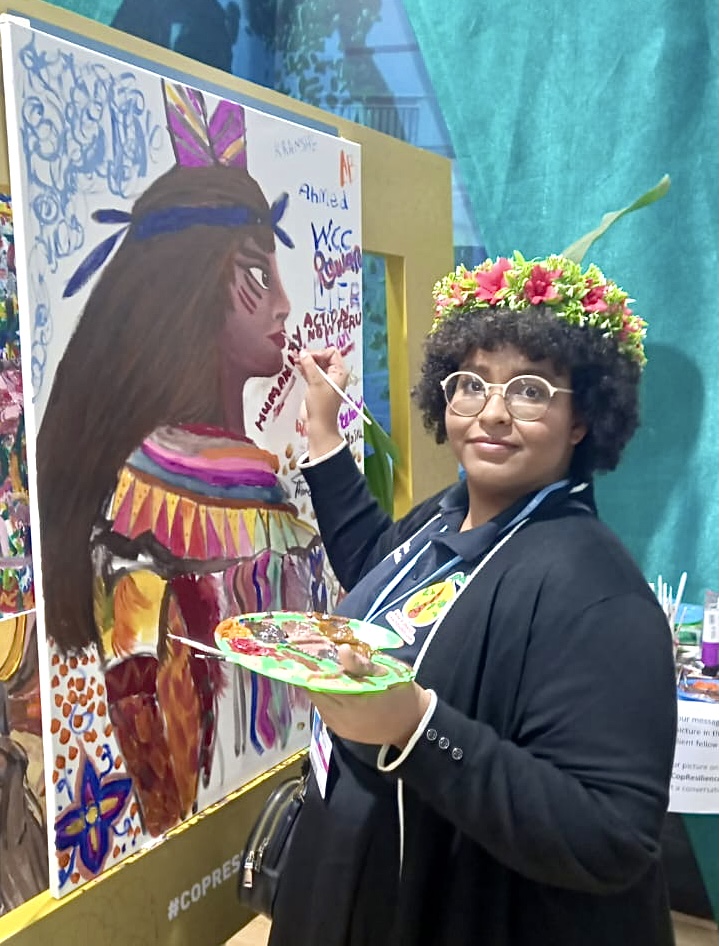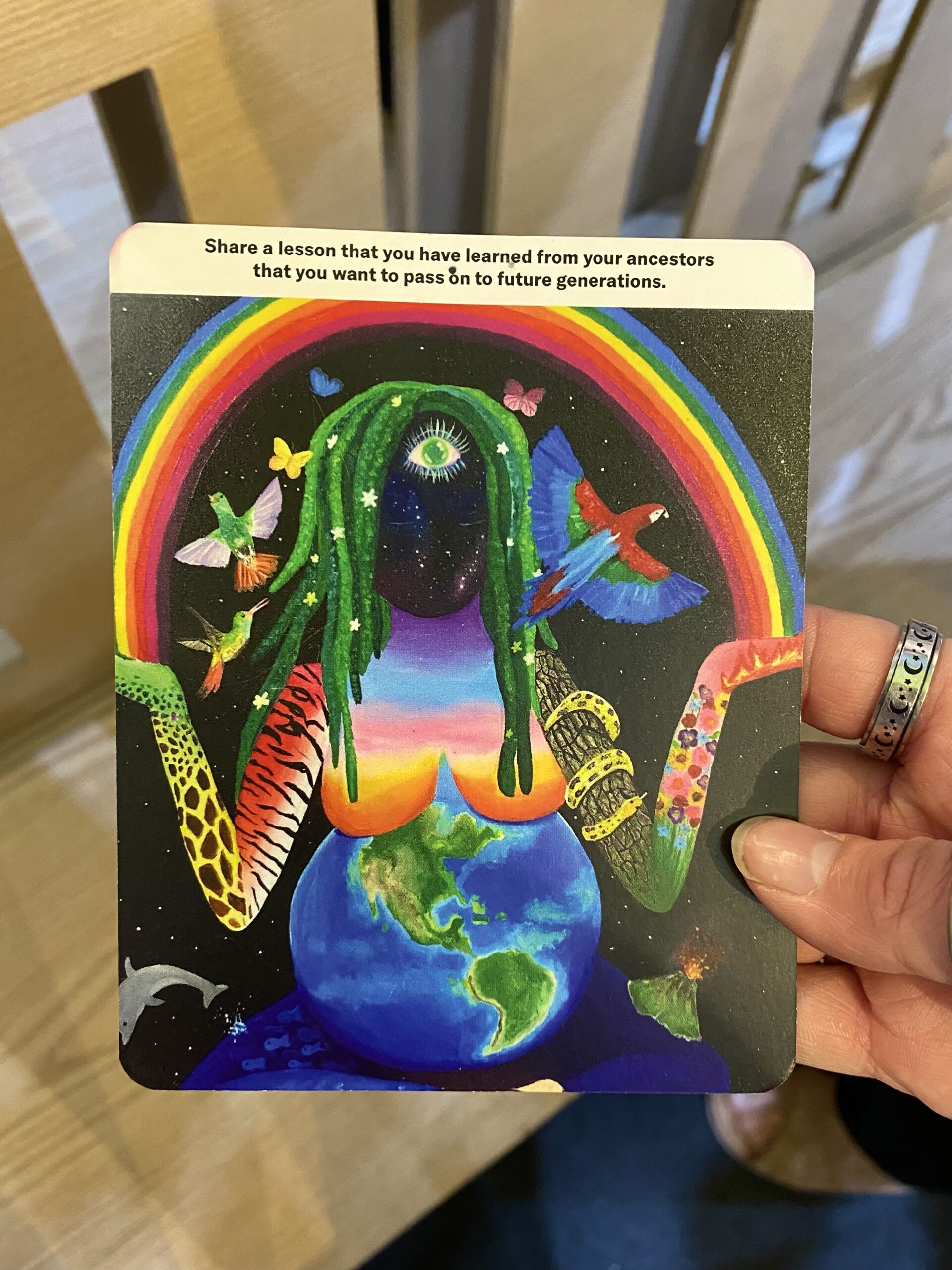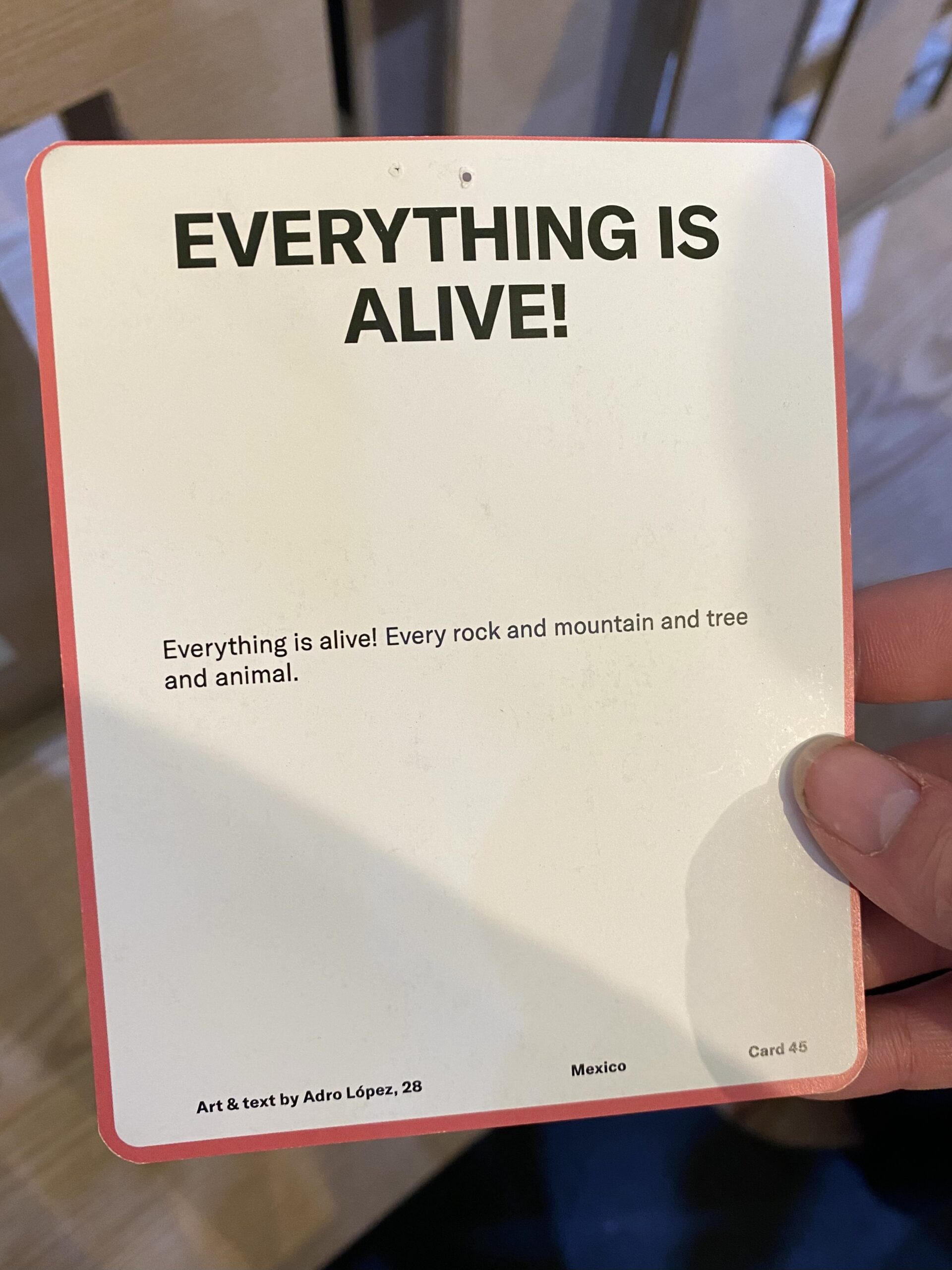By Gracie Roe
When we came to this year’s UN climate change conference, COP27, I anticipated spending time in pavilions, negotiation spaces, and networking. What I didn’t expect to find was a vibrant art scene, with each artist patiently waiting to share their story. I met people from small island states and progressive European cities, from as far as Vietnam, and from right here in Egypt. But even from opposite ends of the world, one thing connected us all: our passion for climate-conscious art and artistic nature-based solutions. They all had a unique story to tell, and I was eager to listen. This photo essay captures a collection of my favorites.
Jovana Hoschtialek is an incredibly kind seventeen-year-old artist, and is the youth delegate for Grenada, a small island in the Caribbean. She is primarily self-taught, and works in multiple mediums such as a variety of paints and sketch work. She believes that expressing herself creatively is a large contributor to her role as a youth climate activist, and that we should all take time to make art because it is a way to inspire people into climate action. Funded by the UN, Jovana came to COP27 with her father Johann, another delegate for Grenada, and the two will set off on an ambitious journey at the start of the new year. Their travels will take them to 195 countries in 365 days, with the aim of increasing community engagement, environmental awareness, and bringing global youth together to demand action from our governments. You can follow along their journey through their website 195in365.com.

Miora Rajaonary is a photojournalist working as a storyteller for National Geographic alongside her independent projects. One particular talk I attended was about her work documenting famine in her home country of Madagascar. Her work was revolutionary in the sense that she photographed success stories as well as the issue at hand, because she believes that sometimes the pain and suffering can turn people off. This particular series was made up of equal parts sorrow and equal parts hope, displaying a starving mother and child, but also the vibrant greens of the fields that are products of their new agriculture system. The images were starkly contrasted with each other, in a way that I feel more holistically captures how an issue affects the people living in it. Though their current harvest system isn’t fully fixed, they are making progress, and it sparks hope to see even part of the solution.
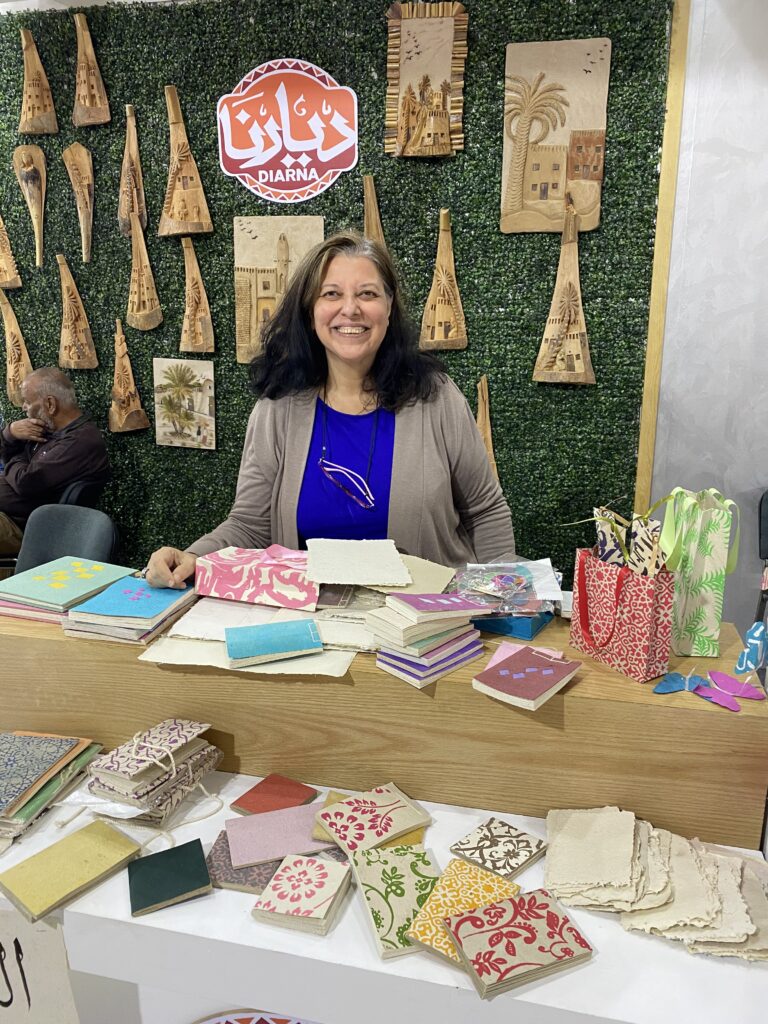
Enas Khames is a sweet Egypt local from Cairo that uses recycled agricultural waste to make paper products. After graduating from art school, she decided to turn rice straw, which makes up almost 20% of Egypt’s 32 million tons of annual agricultural waste, into paper instead of cutting down trees for it. She learned her techniques from artisans in Japan, and now teaches the method to local women, children, and individuals that are deaf or mute in her community. Enas now makes 150 different products and travels around to different markets and conferences to sell them. Her handle is @nafezaty on instagram.
Turn it Around is a collection of adult flash cards that was started by Adrienne Jenik, in partnership with other collaborators, to produce a movement that reverses the roles of climate education to a bottom-up approach. It is a chance for youth to educate politicians, policy makers, educators, and anyone else willing to listen. Each flash card has one side completely filled with a youth artist’s piece, while the other side displays a prompt or phrase that reminds audiences about the importance of art-based climate education or encourages fresh perspectives on the climate crisis. Their global ask for youth art produced around 444 submissions from 44 countries all over the world, and the cards have now been used in a range of settings from kindergarten classrooms all the way up to official business meetings. Not only that, but the company offers flash cards in English, French, or Spanish, and are working on translating them into more languages. You can find them all online at turnitaroundcards.org.
These artists are only a few of the hundreds I met, and each one did incredible work in their own ways. I saw luxury dresses made from upcycled rugs, 20-foot sculptures from old water bottles, and fine art pieces made from sand or hundreds of recycled plastic bags instead of paint. Each one was more cool and creative than the last. But these artists in particular stood out to me, with their innovative methods, infectious positive mindsets, and extraordinary stories that will stay with me forever. I sincerely hope you check out their work, and give their initiatives some love and support, just as I did.
